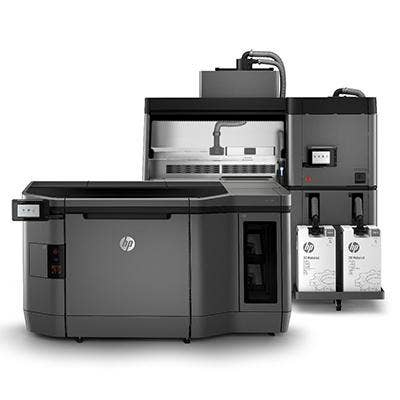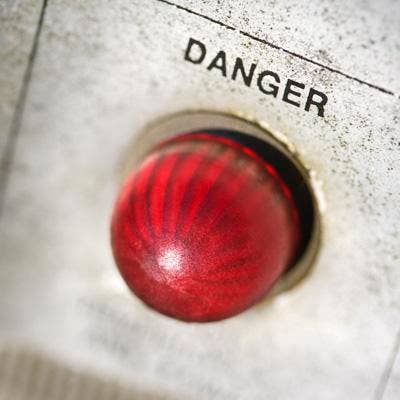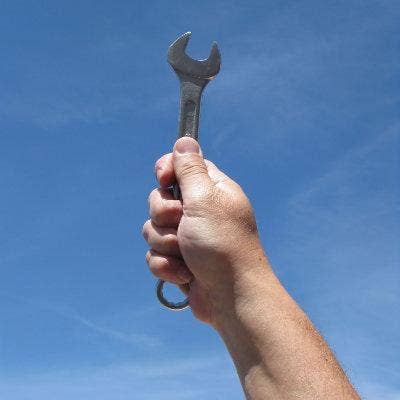CRN Exclusive: HP 3-D Printing President Nigro On Channel 1.0, Adding New Partners, And The Future Product Road Map

Bringing 3-D Printing To The Channel
HP 3-D Printing Business President Stephen Nigro, the driving force behind the launch of the company's breakthrough MultiJet Fusion 3-D printer, spoke with CRN about the 'Channel 1.0 plan for the product, adding new partners, and the product road map.
"So the first six months we were placing some units in a controlled fashion, getting some units in, getting customers learning, getting the channel kind of set up," Nigro told CRN. "And the second half of this year is, 'Go sell.' We have our channels pretty well identified for what we call 'Channel 1.0.'"
The channel opportunity for the new printers initially is focused on the 30 elite global partners with deep expertise in the 3-D manufacturing market.
HP says MultiJet Fusion 3-D printing solutions deliver "superior quality physical parts at up to 10 times faster and at half the cost" of current 3-D printers. That is because HP is printing at the "individual voxel level’ – what it calls the ’3-D equivalent of a 2-D pixel in traditional printing."
Partners say the MultiJet Fusion 3-D printing solutions, which began shipping last year, herald a new era of printer sales growth that is focused squarely on redefining the economics of the intensely competitive production manufacturing market.

What is channel sales ramp with MultiJet Fusion 3-D printing solutions?
In the first six months, we were in a cautious ramp. We wanted to get products out in customers' hands. We know in spite of all the testing we did in our labs, we were going to make new discoveries when you get into actual customer environments.
So the first six months we were placing some units in a controlled fashion, getting some units in, getting customers learning, getting the channel kind of set up. And the second half of this year is, 'Go sell.' We have our channels pretty well identified for what we call 'Channel 1.0.'

What partners are stepping up to make the big investments necessary to play in this market?
When we talk to partners, we show them a model. With our first wave – Channel 1.0 -- they had to be able to sell, of course -- show [the products] and service [producing 3-D manufacturing parts]. You have to have those capabilities. We sit down with them and share how it works. Here is your investment, here is what you need to do, here is how many you have to sell, here is your margin and here is your return. We have built this whole model out and let partners know what it looks like.

What is Channel 1.0 and who are partners that you are working with?
Eighty percent of the channel partners that we signed up are new to HP. So basically these guys today know how to sell 3-D. They know how to sell that solution.
The challenge for the new people that aren't in 3-D is they have to make a decision to get into it and then they have to build enough capabilities so they can go sell it. In a lot of cases, you have to call on someone different. You are not calling on the CIO or the purchasing manager. You are calling on the engineering manager or talking to the operations manager. So it is a different selling motion. The challenge for the channel to get into this is they have to be able to sell solutions, understand 3-D and be able to reach out to the right end customer.

What partners have the easiest point of entry into the 3-D printing opportunity?
Anybody that is calling on manufacturing/engineering or customers that design physical products. That includes [product] designers or architectural firms or anyone making products -- consumer products, automotive products. Think of all the multiple tiers of auto [parts] suppliers.

How will you go about expanding the 3-D portfolio into the future?
We will be expanding the portfolio in the future. Think of where our first product is -- it starts at $130,000 and it goes up to $200,000.
As we look ahead, we want to do two things: One, we want to bring the price point down. We want to come out with a solution that has a lower price point and gets us into a different environment. And then we are also going to go up [market as well].
So we are going to expand the portfolio up and down. As we do that, of course, we are going to have to adjust our go-to-market and our channel. So you'll see as we go down in price point having to expand our channel breadth so we can have a greater reach. And it is going to become an easier sell because without a doubt today, selling a 3-D printing solution is a solution sell.

What have been the biggest obstacles in the sales process?
One of the things that is gating [the sales process is] [manufacturing] benchmarks. Any customers who are interested, the first thing they ask for is to get [manufacturing] parts. So every sale pretty much means we are going to produce those benchmark parts, get it out to the customer so they can validate that part meets the specs and mechanical requirements. That is part of the sales motion. We'll get our channel partners set up and they'll be starting to do benchmarking in the second half of this year.

What engineering resources are being brought to bear to lower the 3-D price point below the current $130,000 price point?
Any time you have a new complex technology, one of the things is over time it always gets better. It is brand new. MultiJet Fusion has never been done before. You have a lot of learning. It will be a big technical accomplishment when we get there.
If you are a designer or engineer, we want you to be able to early in your design cycle get 3-D printing parts. So you can go to a service bureau or you can get it locally.
We want to go down in price point so it makes it easier for someone to have local access to product, and then you will be able to go up so that when you want to produce tens of thousands or hundreds of thousands of something, it is going to make sense. We will fill out the lineup.
When you are designing every step of the way you are using MultiJet Fusion and we are able to match how you want to work.

What has been the biggest issue as you roll the product out to partners?
Personally, I have been involved with every new [printing] platform that we have pretty much put together in printing since I joined [HP] in 1981 – working on the first inkjet color printer.
3-D printing is a complex technology. We were surprised, I would say, by the complexity of the system -- there are so many variables. In other words, when you go from two-dimensional to three-dimensional it is not a linear relationship.
There is a lot going on in the system that has taken us a little bit more time to get an understanding of. That is why the industry has struggled so much to make reliable products. It is complex, but that plays to our strength. That plays to who we are and the progress that we have been making.
There is going to be a big barrier to entry for somebody else to get into this category.